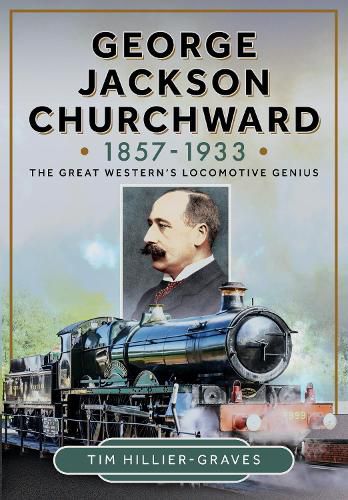Readings Newsletter
Become a Readings Member to make your shopping experience even easier.
Sign in or sign up for free!
You’re not far away from qualifying for FREE standard shipping within Australia
You’ve qualified for FREE standard shipping within Australia
The cart is loading…






George Churchward is regarded by many, including the towering figures of Nigel Gresley, William Stanier and Andre Chapelon, as the most inventive, ingenious and successful steam locomotive designer there has ever been. When given the opportunity to comment these three exceptional engineers made their admiration for him and his many achievements a matter of historical fact. Now, a 100 or so years since Churchward retired from the GWR, his reputation is just as revered, as is the influence he had on the work of others. But, as with other notable figures, many details of his life and work have become mythologised or forgotten. So the time for an update and re-evaluation of his story is long overdue. In this richly illustrated book the author re-appraises Churchward's life and work and assesses this pivotal period in railway history. In so doing he considers the true extent of his achievements and effect of his work on the great railway engineers that followed and the effect his leadership had on the GWR as a whole and the organisation he controlled at a time of immense social and political change. AUTHOR: Tim Hillier-Graves was born in North London during 1951. On leaving university he served as an officer with the Royal Navy, seeing wide service on land and sea. For much of this time he specialised in weapon development projects, specifically missiles and heavyweight torpedoes, and worked alongside BAe, Marconi Space and Defence Systems and McDonnell Douglas in the process. In support of this work, he undertook prolonged periods of study and research at the Royal Naval College, Greenwich, and the Royal Military College of Science, Shrivenham. Late in his career he changed specialisms to become Head of Investigations for the MoD's Estates Organisation. From this he moved on to become Head of Finance and Planning and then into Human Resource Management where he specialised in outsourcing to industry. Then as an Assistant Director he took on responsibility of housing for military personnel. He retired in 2011 to focus more fully on his writing producing numerous books and articles on engineering, naval, aviation, military and railway matters. 20 colour, 230 b/w illustrations
$9.00 standard shipping within Australia
FREE standard shipping within Australia for orders over $100.00
Express & International shipping calculated at checkout
George Churchward is regarded by many, including the towering figures of Nigel Gresley, William Stanier and Andre Chapelon, as the most inventive, ingenious and successful steam locomotive designer there has ever been. When given the opportunity to comment these three exceptional engineers made their admiration for him and his many achievements a matter of historical fact. Now, a 100 or so years since Churchward retired from the GWR, his reputation is just as revered, as is the influence he had on the work of others. But, as with other notable figures, many details of his life and work have become mythologised or forgotten. So the time for an update and re-evaluation of his story is long overdue. In this richly illustrated book the author re-appraises Churchward's life and work and assesses this pivotal period in railway history. In so doing he considers the true extent of his achievements and effect of his work on the great railway engineers that followed and the effect his leadership had on the GWR as a whole and the organisation he controlled at a time of immense social and political change. AUTHOR: Tim Hillier-Graves was born in North London during 1951. On leaving university he served as an officer with the Royal Navy, seeing wide service on land and sea. For much of this time he specialised in weapon development projects, specifically missiles and heavyweight torpedoes, and worked alongside BAe, Marconi Space and Defence Systems and McDonnell Douglas in the process. In support of this work, he undertook prolonged periods of study and research at the Royal Naval College, Greenwich, and the Royal Military College of Science, Shrivenham. Late in his career he changed specialisms to become Head of Investigations for the MoD's Estates Organisation. From this he moved on to become Head of Finance and Planning and then into Human Resource Management where he specialised in outsourcing to industry. Then as an Assistant Director he took on responsibility of housing for military personnel. He retired in 2011 to focus more fully on his writing producing numerous books and articles on engineering, naval, aviation, military and railway matters. 20 colour, 230 b/w illustrations